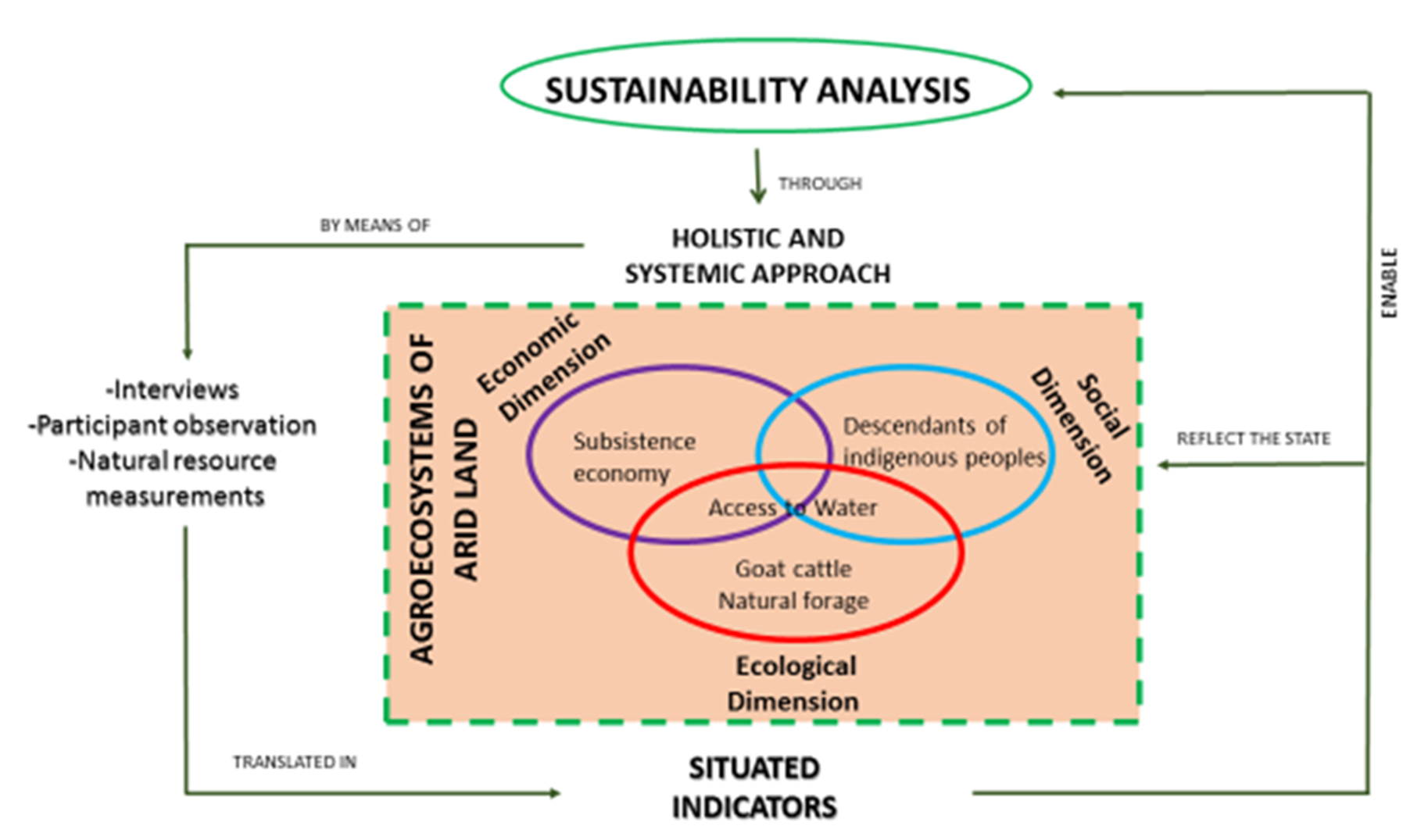Use of indicators as a tool to measure sustainability in agroecosystems of arid land, San Juan, Argentina
Keywords:
multidimensional, analysis agroecology, dryland, non-irrigated landAbstract

The main objective of this study was to determine the sustainability status of three agroecosystems in arid areas, and to identify the critical aspects that limit it, through the use of economic, ecological and socio-cultural indicators. Three agroecosystems (AE) were selected from the Department of 25 de Mayo, San Juan. Its main economic activity is goat farming and, to a lesser extent, cultivation of orchards, as well as subsistence economic activities. To determine the state of sustainability, the indicators were selected and subse-quently standardized and weighted according to their relative importance with respect to sustainability. The results indicated that none of the dryland AE achieves sustainability simultaneously in its three dimensions. The systemic analysis through indicators showed that the critical variables are food self-sufficiency, water access, livestock survival, and technical assistance, among others. The methodology used is simple, allowing to detect the sustainability status of the three EAs, and to identify the critical variables that jeopardize the permanence of the AE over time.
Highlights
- Agroecosystems in arid zones do not achieve sustainability in all three dimensions simultaneously.
- The farm area of "‹"‹the agroecosystems was determined through participatory mapping.
- According to the sustainability analysis, the critical variables that stood out were food self-sufficiency, access to quality water, the survival of livestock and the satisfaction of basic needs.
- The use of indicators to measure sustainability is easy to use and low-cost tools.

Published
Issue
Section
License
Aquellos autores/as que tengan publicaciones con esta revista, aceptan las Políticas Editoriales.


